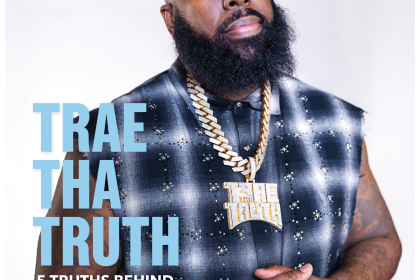Healing from trauma is a journey that takes time, understanding and sometimes, alternative methods beyond traditional therapy. One powerful and increasingly recognized method is music therapy. For many, music is more than just a form of entertainment; it can be a profound source of comfort, self-expression and healing. This article will explore how music therapy can play a significant role in the emotional and psychological recovery process for those who have experienced trauma.
The healing power of music therapy
Music therapy is an evidence-based, clinical use of musical interventions to accomplish individualized goals within a therapeutic relationship. The practice is more than just listening to calming tunes — it involves active participation with music, whether that’s through playing instruments, singing or even composing. Music has the capacity to stimulate emotions, access deep-seated memories and even allow an individual to confront trauma in a safe, controlled environment.
For people who have undergone trauma — whether from personal loss, abuse or other life-altering events — music can act as a bridge to unlock emotional expression that may be too painful to vocalize. This emotional release is often the first step in healing.
How music therapy helps heal trauma
Trauma has profound effects on the brain and body, with many people experiencing physical symptoms like increased heart rate, headaches and muscle tension. Music therapy works to heal trauma by addressing both the emotional and physical responses to distress. Here’s how it helps:
Music stimulates emotional expression
For individuals struggling to talk about their experiences, music becomes a powerful tool for self-expression. Trauma can make it hard for people to verbalize their pain, and music helps bypass this obstacle. In music therapy, the rhythm, melodies and harmonies evoke emotional responses, providing a non-verbal outlet for feelings that are too overwhelming to express in words. Music creates a safe emotional space, encouraging the release of bottled-up feelings.
Music and emotional release
The focus keyword is evident in how this technique allows patients to connect with their emotional core. The deep connection to emotions brought about by music therapy can be the first step in trauma survivors rediscovering their emotional balance. For example, slow, soothing music helps reduce anxiety, while more upbeat music can energize and inspire.
Music affects the brain’s reward system
Music can trigger the release of dopamine, the “feel-good” chemical in the brain. For individuals who have faced trauma, experiencing joy or pleasure can seem distant or impossible. Music therapy introduces moments of happiness into the healing process, breaking through emotional numbness or sadness.
Additionally, music helps regulate the autonomic nervous system. When someone has undergone trauma, they often live in a constant state of fight or flight. Music therapy, through its rhythmic and calming qualities, can help stabilize heart rates and breathing patterns, easing physical symptoms of stress. By activating these systems, music provides a neurological and physical respite from the symptoms of trauma.
The role of a music therapist in healing trauma
In music therapy sessions, trained therapists guide individuals through their healing journey using specific techniques. This might include:
- Improvisation: Creating spontaneous music allows individuals to express deep-seated emotions without having to follow specific rules.
- Songwriting: Creating lyrics and melodies can help people tell their stories and reclaim power over their trauma.
- Active listening: Patients listen to music and discuss how it makes them feel, encouraging emotional exploration.
Music therapy for trauma recovery
The therapist’s role is crucial because they can tailor interventions to each person’s needs. They ensure that the music used in sessions evokes the right emotions and aids in processing traumatic experiences safely.
For example, a trauma survivor who experiences flashbacks may be guided to create music that represents their fear or anxiety. Over time — with the therapist’s guidance — the music can evolve into a more hopeful or uplifting sound, symbolizing the healing process. This method helps the patient gradually confront and release their trauma in a controlled and creative way.
Rebuilding a sense of control and safety
One of the long-lasting effects of trauma is the feeling of a loss of control. Victims often feel helpless or powerless. Music therapy can help rebuild a sense of agency in their lives. When a person is actively engaging in creating music — whether it’s through playing an instrument or writing a song — they are making choices, controlling the pace, rhythm and mood. This autonomy is critical for those recovering from trauma, as it mirrors their journey toward reclaiming control over their lives.
Instruments like drums, piano, or even one’s own voice provide the individual with a tangible way to feel powerful and in command of their environment. The act of creating music becomes symbolic of regaining power over one’s emotional and physical state.
Music therapy and trauma healing across ages
Music therapy is not limited to any one group; it’s effective across ages and demographics. For children, who may not yet have the vocabulary to express their trauma, music serves as a language they can use. Whether through movement, rhythm or song, music allows young people to communicate complex feelings that they otherwise might not know how to express.
Music therapy for trauma in different age groups
For adults — especially those with long-standing trauma — music therapy can bring about emotional breakthroughs. By confronting memories and emotions in the safe space that music provides, adults can start to work through their trauma in a manageable way. Even elderly individuals with dementia or PTSD from past experiences have found peace and healing through music therapy.
Music therapy as a complement to traditional therapy
Music therapy should not be seen as a replacement for traditional trauma therapy, but rather as a complement. It often works best when integrated into a broader therapeutic program. Combining traditional talk therapy with music therapy can help individuals process their trauma from different angles. While traditional therapy may address cognitive and behavioral aspects of trauma, music therapy taps into the emotional and sensory dimensions.
Combining music and talk therapy
A combined approach can lead to more holistic healing. In a single session, a therapist might start with music to calm the patient’s mind and open emotional channels before moving into a more conventional discussion-based therapy. This back-and-forth between different therapeutic methods allows for a deeper and more effective healing process.
The transformative power of music in trauma recovery
Music therapy offers a unique and powerful path to healing for trauma survivors. By unlocking emotional expression, soothing the body’s nervous system and helping individuals regain a sense of control, music therapy can complement traditional therapeutic practices to provide holistic healing. Trauma recovery is a multifaceted journey, but with the help of music, survivors can find a way to express their pain, reconnect with their emotions and ultimately, heal.
For anyone struggling with trauma, music therapy might be the key to unlocking those hard-to-reach places and making strides toward recovery. It is a reminder that even in the darkest times, music can offer light, hope, and a path forward.
This story was created using AI technology.

















